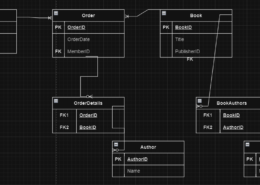What are the different subsystems involved in making a Satellite? and are the term satellite and rocket same, justify?
Individual investors’ decisions in the stock market are heavily influenced by several psychological factors. One major factor is herd behavior, where investors follow the actions of others, leading to rapid price increases or drops based on perceived trends rather than fundamental analysis. This canRead more
Individual investors’ decisions in the stock market are heavily influenced by several psychological factors. One major factor is herd behavior, where investors follow the actions of others, leading to rapid price increases or drops based on perceived trends rather than fundamental analysis. This can cause significant market volatility as prices swing sharply with shifts in sentiment.
Overconfidence is another factor. Investors often overestimate their knowledge and ability to predict market movements, leading to excessive trading and risk-taking. This behavior can inflate stock prices beyond their intrinsic value, eventually causing corrections when reality sets in.
Loss aversion describes investors’ tendency to fear losses more than they value gains. This can lead to panic selling during market downturns, exacerbating declines and increasing volatility. Conversely, greed can drive investors to hold onto stocks too long, hoping for higher returns, which can result in sharp sell-offs when the market turns.
Anchoring is when investors rely too heavily on the initial piece of information they encounter, such as a stock’s past performance, ignoring new data that might suggest a different direction.
These psychological factors contribute to unpredictable market behavior, making stock prices more volatile and sometimes misaligned with the underlying economic fundamentals. Understanding these factors is crucial for both investors and market analysts to better navigate the complexities of the stock market.


A satellite consists of several critical subsystems that work together to ensure its successful operation in space: 1. **Power Subsystem**: Provides the necessary electrical power through solar panels and batteries. 2. **Communication Subsystem**: Enables communication with ground stations using antRead more
A satellite consists of several critical subsystems that work together to ensure its successful operation in space:
1. **Power Subsystem**: Provides the necessary electrical power through solar panels and batteries.
2. **Communication Subsystem**: Enables communication with ground stations using antennas and transponders.
3. **Telemetry, Tracking, and Command (TT&C) Subsystem**: Monitors the satellite’s health and transmits data back to Earth.
4. **Attitude and Orbit Control Subsystem (AOCS)**: Maintains the satellite’s orientation and corrects its orbit using thrusters and gyroscopes.
5. **Thermal Control Subsystem**: Regulates the satellite’s temperature using insulation, radiators, and heaters.
6. **Payload Subsystem**: The mission-specific equipment, such as cameras, sensors, or transponders, depending on the satellite’s purpose.
7. **Structural Subsystem**: Provides the mechanical support for all components, ensuring structural integrity during launch and operation.
The terms **satellite** and **rocket** are not the same. A satellite is an object placed into orbit around the Earth or another celestial body to perform specific functions like communication, weather monitoring, or scientific observation. A rocket, on the other hand, is a vehicle designed to propel payloads, such as satellites, into space using thrust generated by expelling exhaust gases. Essentially, a rocket is the delivery system that carries satellites into their designated orbits, while the satellite is the payload that operates in space once deployed.
See less